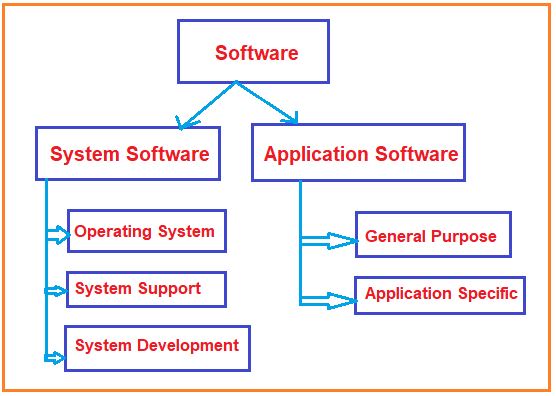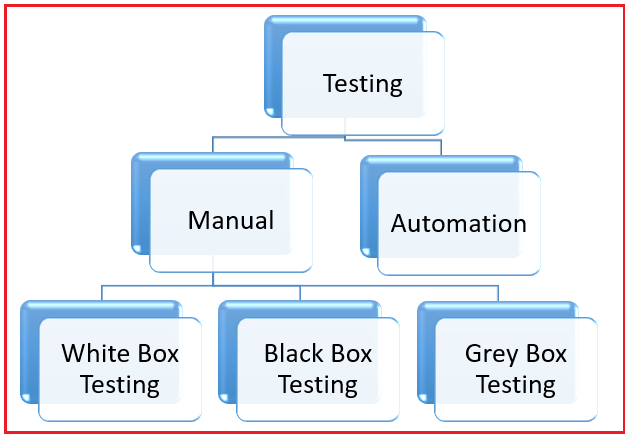Back to: Software Testing Tutorials
Introduction to Software Testing
Software testing is a widely used technology in the IT Industry because it is compulsory to test each and every piece of software before deployment. In this article, I will give a brief introduction to Software Testing. As part of this article, we are going to discuss the following pointers in detail.
- What is Software and its types?
- What is Testing?
- What is Software Testing?
- Why do we need Software Testing?
- What if there is No Software Testing in the Software Development Process?
- What are the Advantages and Disadvantages of Software Testing?
- Types of Software Testing
What is Software?
Software is a collection of programs that uses the resources of the Hardware components. A Program is a set of instructions that are designed for a particular task. The set of programs is called software. Again, Software is classified into two types, i.e. System Software and Application Software. For a better understanding please have a look at the below image.

System software includes the operating system and all the utilities that help keep the computer running. Application software includes programs that do specific tasks, such as word processing or playing games.
System Software:
System Software is software designed for a general purpose and does not have any limitations. It is basically designed to provide a platform for other Software Systems. System Software is classified into three types:
- Operating System: DOS, WINDOWS, LINUX, UNIX
- System Support: Compiler, Interpreter, Assembler
- System Development: Linker, Loader, Editor
Application Software:
Application Software is a program or group of programs designed for end-users i.e. designed for a specific task. Application Software does the functionality for business-oriented applications. Application Software is classified into two types:
- Application-Specific: MS OFFICE, Oracle
- General Purpose Software: Tally
What is Testing?
Testing is the process of determining how effective something is. Examining the functionality, performance, and quality of a software product is a crucial step in the software development process. It seeks to find errors, faults, and inconsistencies in the program to make sure it satisfies the required specifications and performs as planned.
The generation of test cases, test scripts, and test data are common components of systematic, planned testing methods. In order to identify any differences, testers run these tests and contrast the actual findings with the predicted outcomes. Defects must be found, reported, and tracked throughout the process, and testing must be repeated after repairs have been made.
What is Software Testing?
Software testing is the process of determining if a software program or system satisfies the requirements and performs as intended. It entails running a program or application with the goal of finding faults or software flaws. Prior to being distributed to end users, software testing’s main objective is to increase the product’s quality by identifying and correcting errors. Typically, there are numerous steps in the software testing process. These phases could involve requirement analysis, test planning, design, execution, and reporting. Testers examine the requirements and specifications during the requirements analysis stage to comprehend what the software must do and how it must function. In order to ensure that the software satisfies the requirements, test planning includes defining the testing strategy and creating test cases. The process of test design entails identifying the precise tests that will be performed to ensure that the software is operating as intended. While test reporting involves collecting the results and providing feedback to the development team, test execution is actually running the tests and recording the results.
Definition of Software Testing in Software Engineering
According to ANSI/IEEE 1059 Software Testing Standard, Testing in Software Engineering is a process of analyzing a software product or system to examine a software product or system to determine whether it satisfies or fails to satisfy established conditions (i.e., defects). The testing process evaluates the software product’s characteristics for requirements such as missing requirements, bugs, or errors in order to evaluate its reliability, security, and performance.
Why do we need Software Testing?
Software Testing is the art to evaluate the functionality of a software application with the intent to find whether the developed software meets the specified requirements or not and identifying the defects to ensure that the product is defect-free in order to produce a quality product.
What if there is No Software Testing in the Software Development Process?
As per the current trend, due to constant change and development in digitization, our lives are also improving in all areas. That means the way we work is also changed. For instance, we access our bank online, we shop online, we order food online, etc. That means in today’s world, we completely depend on software.
Now, the question is what if these software systems turn out to be defective? We all know that one small bug shows a huge impact on a business in terms of financial loss and reputation. To deliver a quality software product, we need to have tested the software in the Software Development Process. Some of the reasons why testing become so much important are as follows.
- Cost-Effectiveness
- Customer Satisfaction
- Security
- Product Quality
Cost-Effectiveness
It is a true fact in Software Industry that software design defects can never be completely ruled out for any complex system. That does not mean the developers are careless or they are not doing proper coding but because of the complexity of the system. But this is not a problem and we need to accept it.
But, if the software design issues are undetected in the software development phase, then it will become more difficult to trace the defects and rectify the defects. Again, this process will become more expensive to fix the software defects.
In a complex software system, there are many modules. It’s a common problem that while fixing one bug in one module, we may introduce another bug in the same or other modules unknowingly. If the bugs are identified in the early stages of software development, then it will cost much less to fix them.
This is the reason why it is important to find defects or bugs in the early stages of the software development life cycle.
One of the benefits of testing is Cost-Effectiveness. So, it is better to start testing earlier and introduce it in every phase of the software development life cycle and regular testing is needed to ensure that the application is developed as per the requirement.
Customer Satisfaction:
For any kind of business, the ultimate goal is to give the best Customer Satisfaction. We are developing software products for the customer, client, or user. And want the end-user should use the software effectively. Software Testing improves the user experience of an application. Happy customers mean more revenue for a business.
Security
When we develop any software product, we need to consider three things. One is the business requirement i.e. the Software Product should work as expected. The second one is the Performance of the Application and the third one is the security of the application. And Security is one of the most sensitive and vulnerable parts of testing and Testing (penetration testing & security testing) helps in product security.
Nowadays hackers are everywhere and they want to hack the user’s data. These hackers steal user information and use it for their benefit. If your product is not secured, then the end-users will not prefer to use your product. Users always look for trusted products. And Software Testing helps in removing vulnerabilities and security holes in the software product.
Product Quality
Software Testing is an art that helps in strengthening the market reputation of a company by delivering a quality product to the client as mentioned in the requirement specification documents.
Due to these reasons, software testing becomes a very significant and integral part of the Software Development process.
What are the Advantages of Software Testing?
Some of the advantages of Testing are:
- Early detection of diseases or conditions can lead to better treatment outcomes.
- Testing helps identify potential health risks and enables preventive measures.
- Diagnostic tests aid in accurate disease diagnosis, ensuring appropriate treatment plans.
- Testing provides valuable data for medical research and advancements.
- Screening tests can identify conditions before symptoms appear, increasing the chances of successful intervention.
What are the Disadvantages of Software Testing?
After discussing about advantages of testing let’s have a look at the disadvantages of testing:
- False negatives and false positives can occur, leading to incorrect diagnoses and treatments.
- Testing may not be accessible or affordable for everyone, creating disparities in healthcare.
- Test results can take time to process, delaying necessary interventions.
- Some tests have limitations in detecting certain conditions or variations.
- Testing can cause anxiety and stress for individuals awaiting results.
Types of Software Testing
Various types of software testing can be done at different stages of the software development lifecycle. Functional, performance, security, usability, and compatibility testing fall under this category. Verifying that the software complies with the functional requirements provided in the requirements document is known as functional testing. Performance testing entails confirming the software’s scalability and ability to manage a given load. Software security and attack resistance are checked during security testing. Verifying the software’s usability and comprehension includes doing usability testing. Compatibility testing entails confirming that the software is compatible with various hardware setups and operating systems. Let us have a look at this hierarchy chart of types of testing.

We will discuss further the types of testing in our upcoming article in brief.
Conclusion
In conclusion, software testing is a vital step in the process of developing software. It aids in ensuring that the software complies with the given specifications and performs as planned. There are several stages and testing types involved in the software testing process, and there are many advantages to software testing. Software testing must be incorporated into the development process in order to increase software quality and lower the possibility of security breaches.
In the next article, I am going to discuss Software Testing Principles with Examples.
Registration Open – Angular Online Training
Session Time: 8:30 PM – 10:00 PM IST
Advance your career with our expert-led, hands-on live training program. Get complete course details, the syllabus, and Zoom credentials for demo sessions via the links below.

